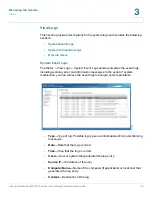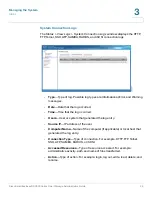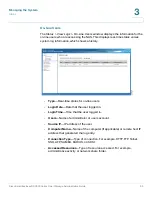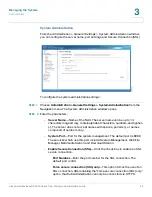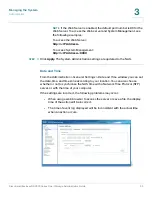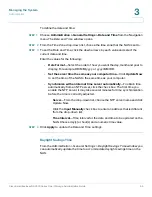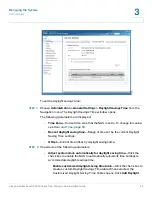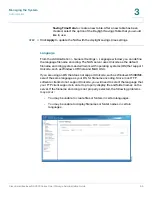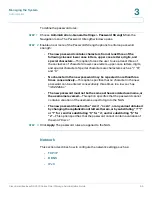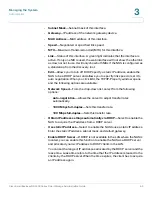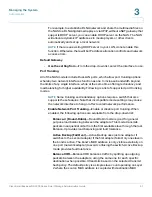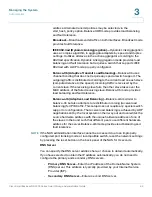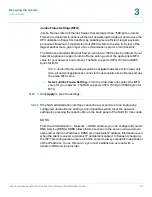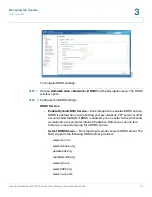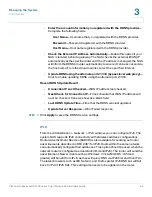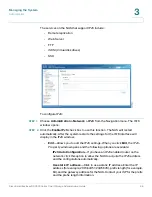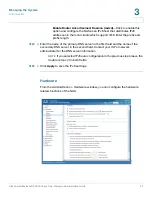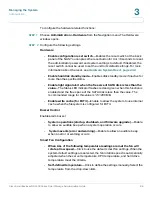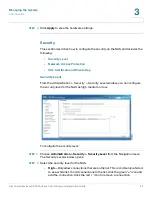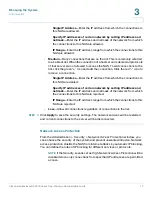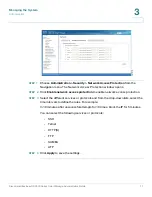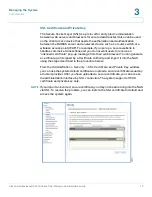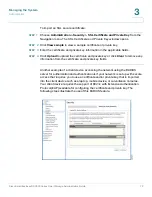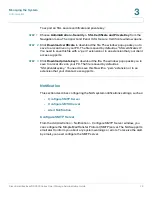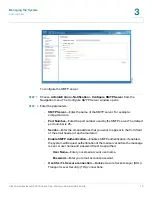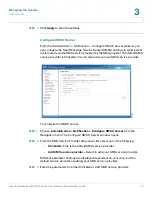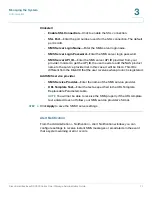
Managing the System
Administration
Cisco Small Business NSS300 Series Smart Storage Administration Guide
62
3
address. Alternate transmit policies may be selected via the
xmit_hash_policy option. Balance XOR mode provides load balancing
and fault tolerance.
-
Broadcast
—Broadcast sends traffic on both interfaces. Broadcast mode
provides fault tolerance.
-
IEEE 802.3ad (Dynamic Link Aggregation)
—Dynamic Link Aggregation
uses a complex algorithm to aggregate adapters by speed and duplex
settings. It utilizes all slaves in the active aggregator according to the
802.3ad specification. Dynamic Link Aggregation mode provides load
balancing and fault tolerance but requires a switch that supports IEEE
802.3ad with LACP mode properly configured.
-
Balance-tlb (Adaptive Transmit Load Balancing)
—Balance-tlb uses
channel bonding that does not require any special switch support. The
outgoing traffic is distributed according to the current load on each slave
(computed relative to the speed). Incoming traffic is received by the
current slave. If the receiving slave fails, the other slave takes over the
MAC address of the failed receiving slave. Balance-tlb mode provides
load balancing and fault tolerance.
-
Balance-alb (Adaptive Load Balancing)
—Balance-alb is similar to
balance-tlb but also attempts to redistribute incoming (receive load
balancing) for IPV4 traffic. This setup does not require any special switch
support or configuration. The receive load balancing is achieved by ARP
negotiation sent by the local system on their way out and overwrites the
source hardware address with the unique hardware address of one of
the slaves in the bond such that different peers use different hardware
address for the server. Balance-alb mode provides load balancing and
fault tolerance.
NOTE
If the NAS administration interface cannot be accessed due to an improperly
configured port trunking mode or incompatible switch, reset the network settings
by pressing the reset button on the back panel of the NAS for 3 seconds.
DNS Server
You can specify the DNS server address here, or choose to obtain it automatically.
If you have selected to obtain the IP address automatically, you do not need to
configure the primary and secondary DNS servers.
•
Primary DNS Server
—Enter the IP address of the Domain Name System
(DNS) server. This address is typically provided by your Internet Service
Provider (ISP).
•
Secondary DNS Server
—Enter a second DNS server.

